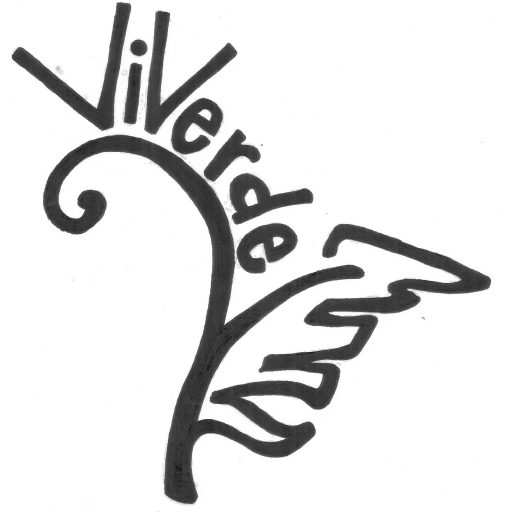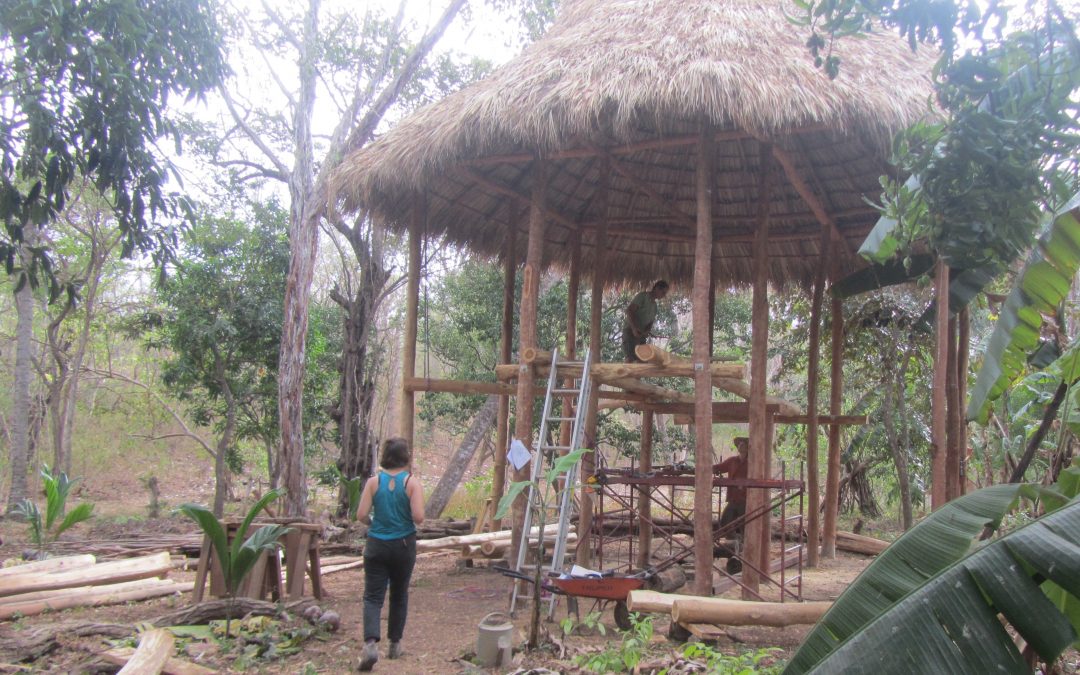When my mom, Diane, came and visited Mark and me in Northern California last fall, she asked what I would like our next project to be at ViVerde. I thought for a minute, “It would be really nice if Mark and I could build ourselves a little cabin…” and right there the Birdhouse was born. It is by no means little – it morphed into a cabin on stilts eight feet off the ground, with a wrap around porch and lofted sleeping area. The indoor space will be cozy and airy. Why so high off the ground? Mosquitos for one thing, but we’ll get the breeze, the trees, the view. It will also bring us one step closer to a shared dream of building a tree house.
When Mark and I arrived at ViVerde in January, a local team from Leon had already created the outside structure with traditional eucalyptus posts and beams and they had installed a very tall thatch palm roof. Now it was our turn to create the structure within. We began searching for suitable teak trees round the property, checking for straightness and height. Most of our tropical hardwoods were planted by Yvan, ViVerde’s previous owner who planted them when he was a young French teacher living on the property.
If we were ever going to be able to move the heavy logs to the worksite, we needed wheels. I worked with my dad, Gerard, to design a timber cart and then I was able to show off my new welding skills in putting it together. I have been learning to weld from a very generous metal expert where I live in Sonoma County, CA.
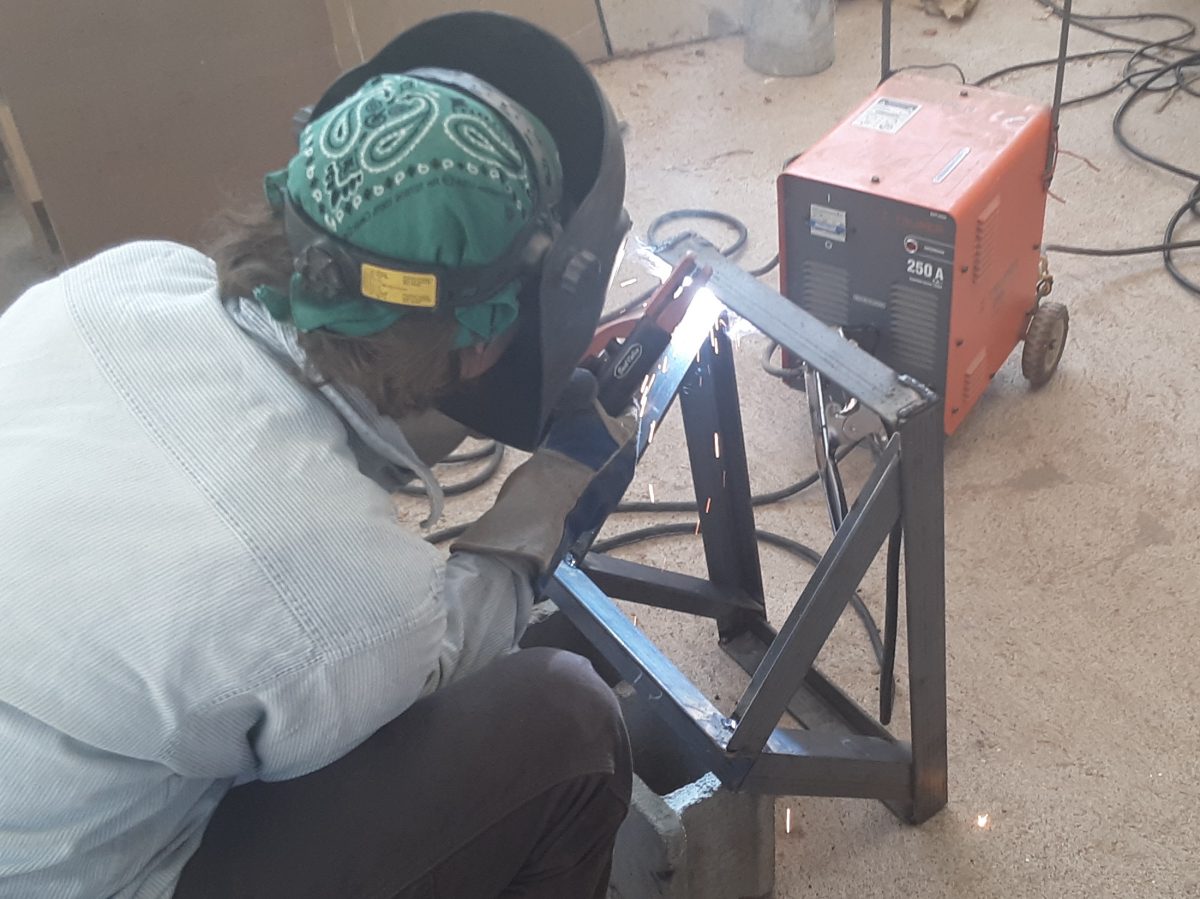
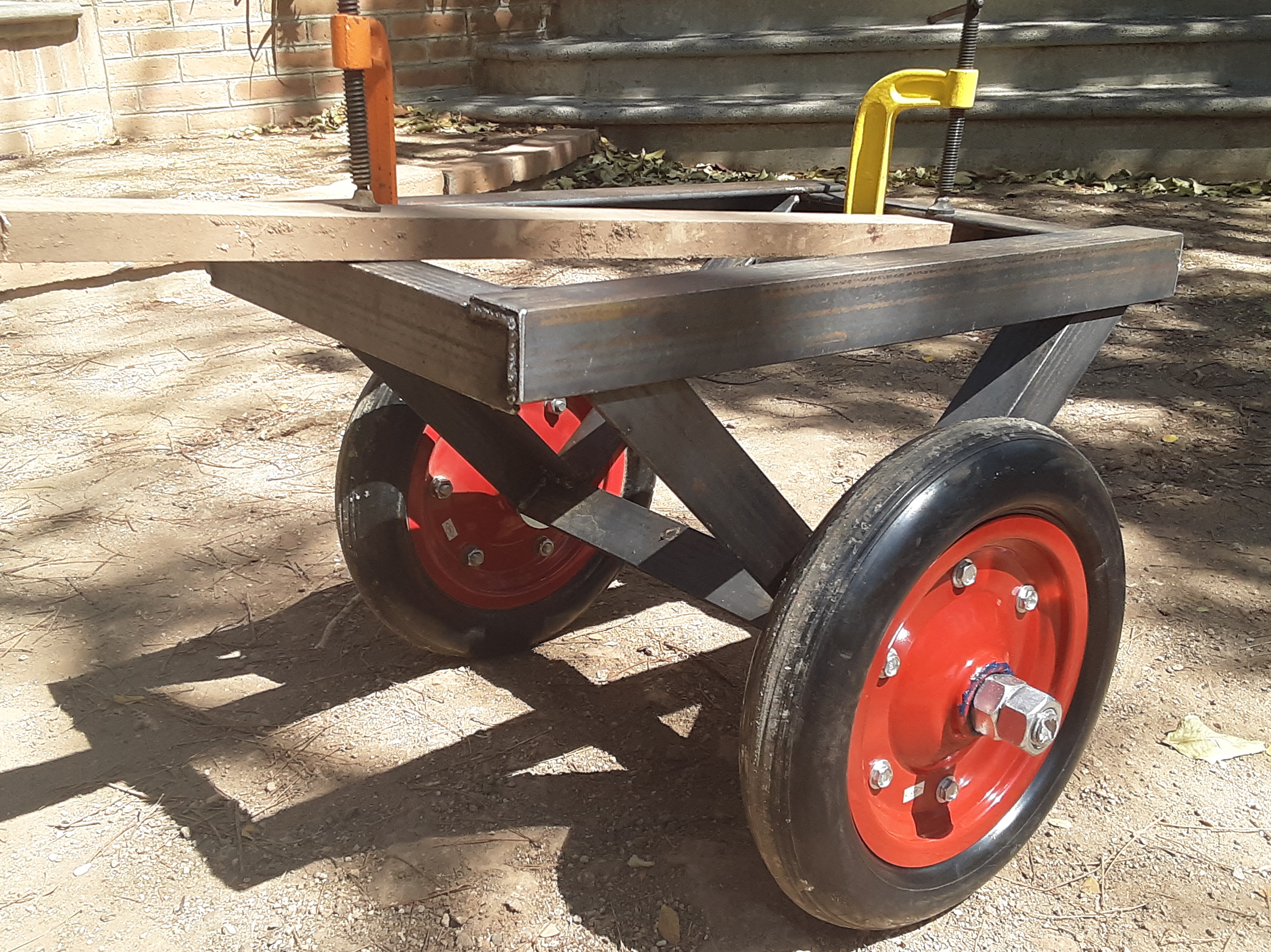
The building process was slow and methodical and we are learning as we go. Mark’s Uncle Chris joined us for a week of felling, debarking trees and attaching the first beams. After checking for height and straightness, Mark felled the trees. Our workers were always at the ready with ropes to coax the trees down when caught up in the thick canopy. We used our timber cart to move logs to the worksite. It worked as we had hoped, but many hands and strong backs were also needed.
We trialed different methods to plane the beams and found the Alaskan mill gave the best results. This device rides on a flat surface, guiding the chainsaw as it creates the first of the square sides. Joints were all hand chiseled, some before they went up and some in place. Beams were carefully hoisted — again, they are very heavy. Once the big beams were secured, the others went more quickly…
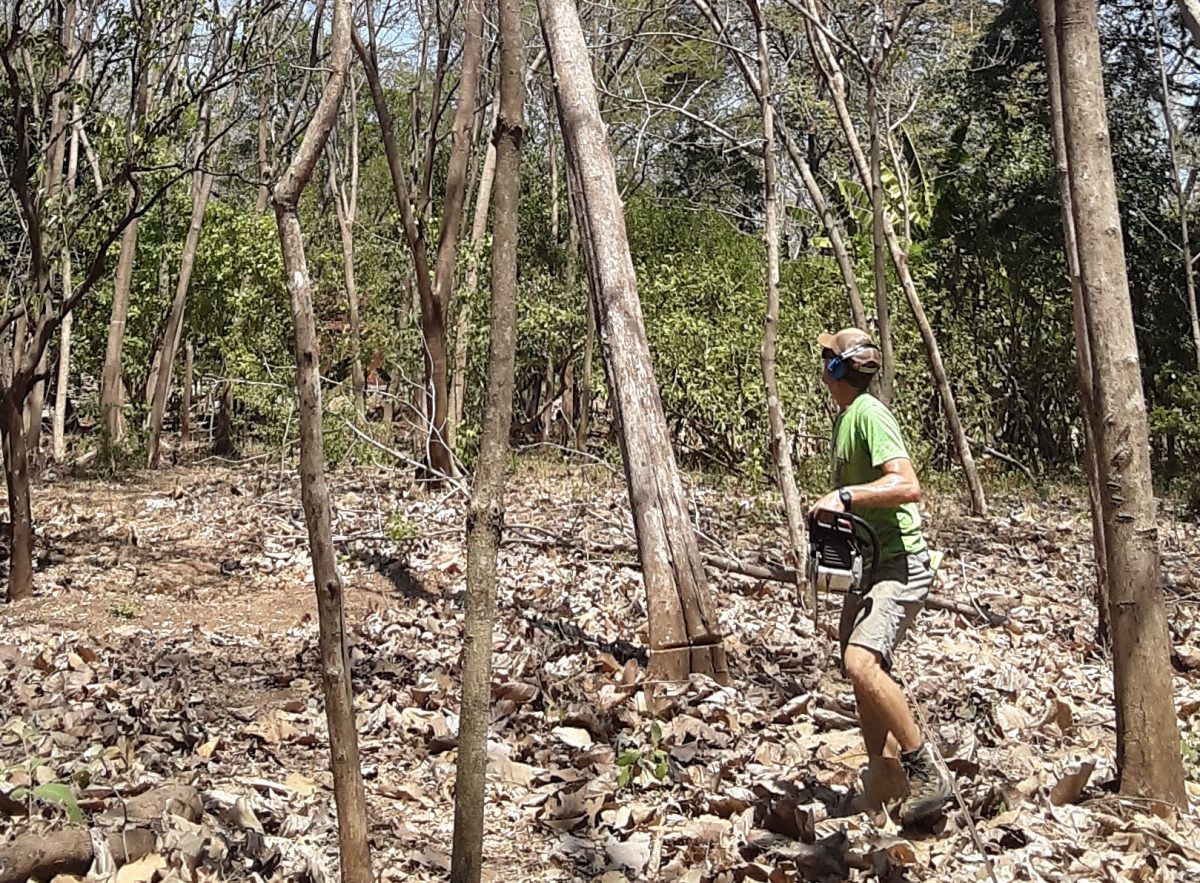
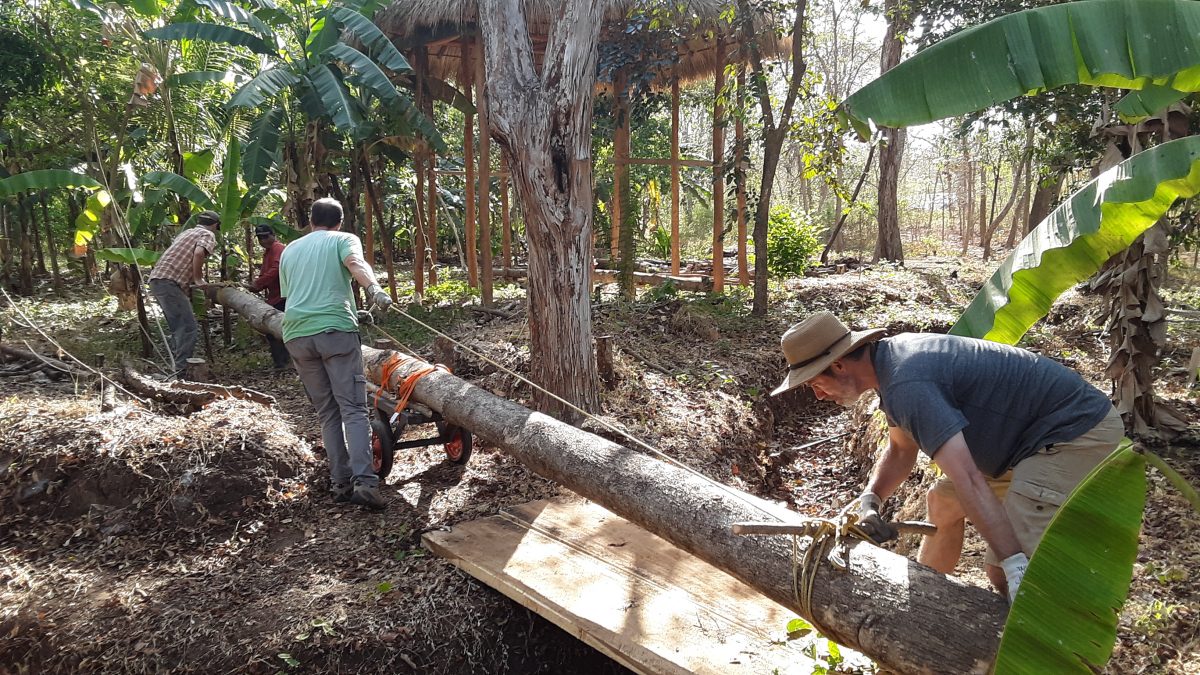
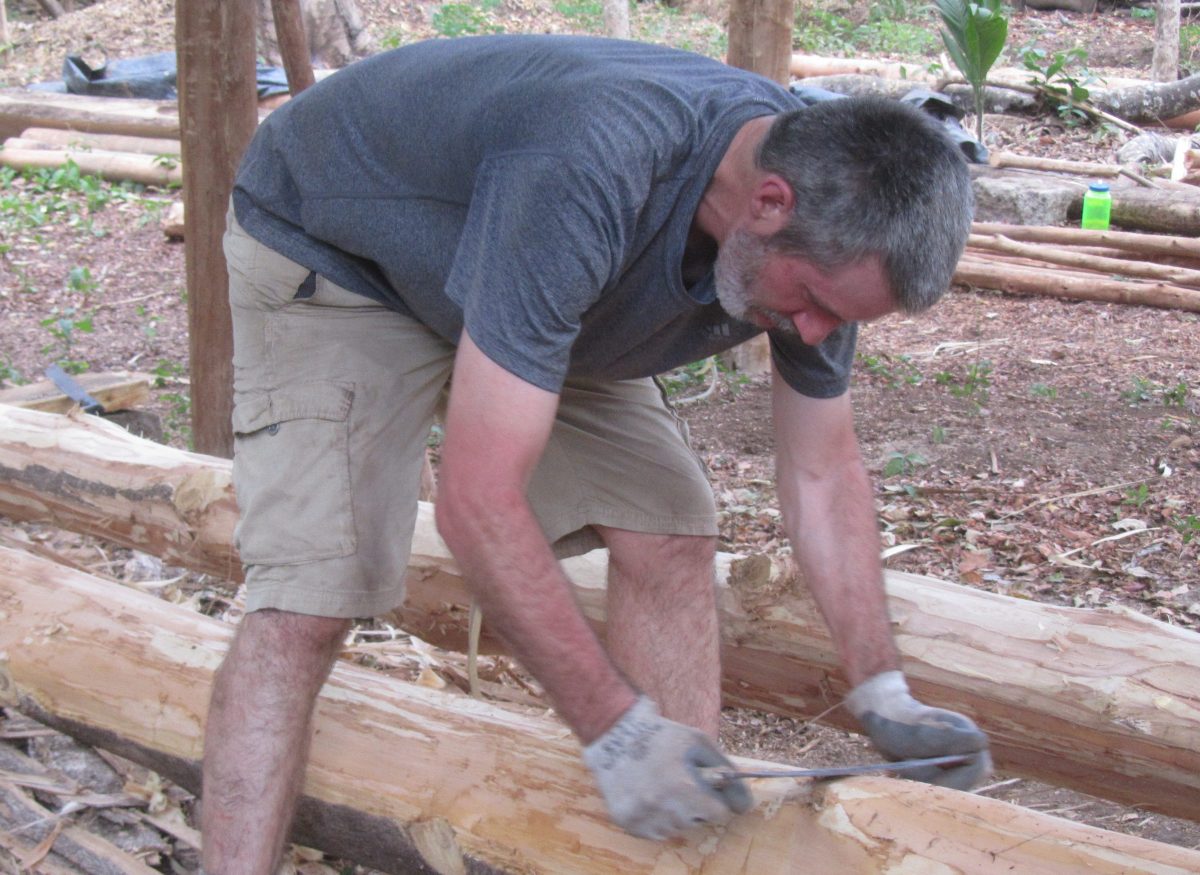
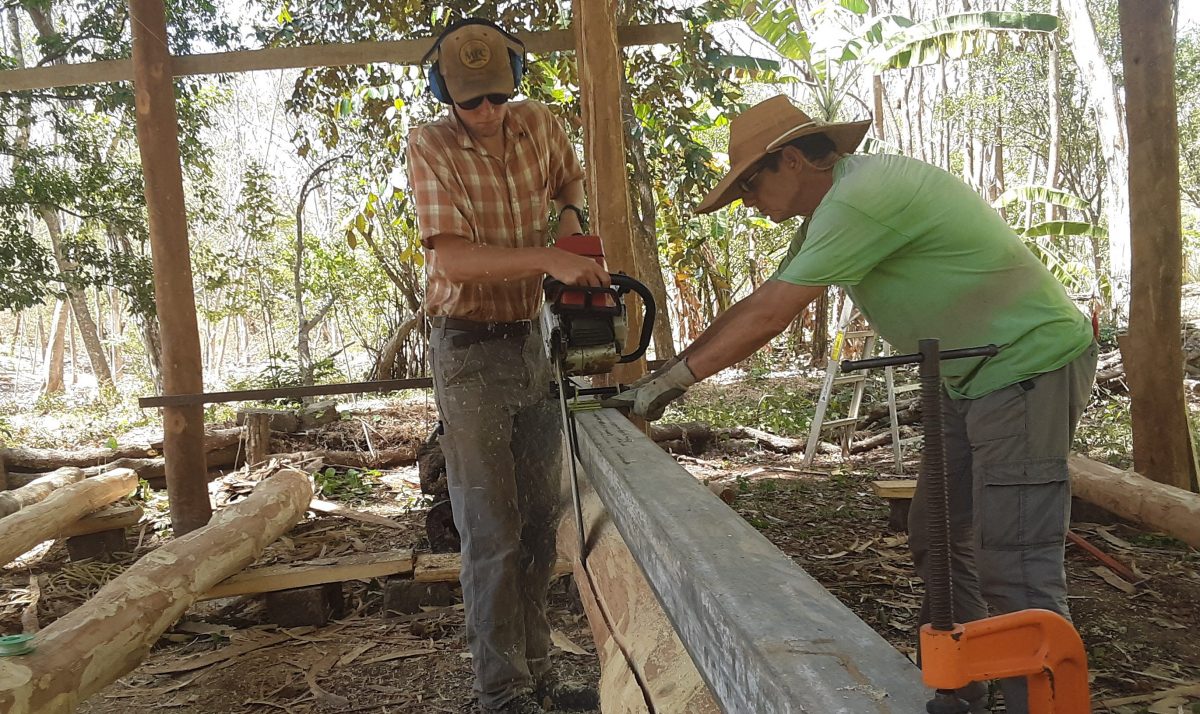
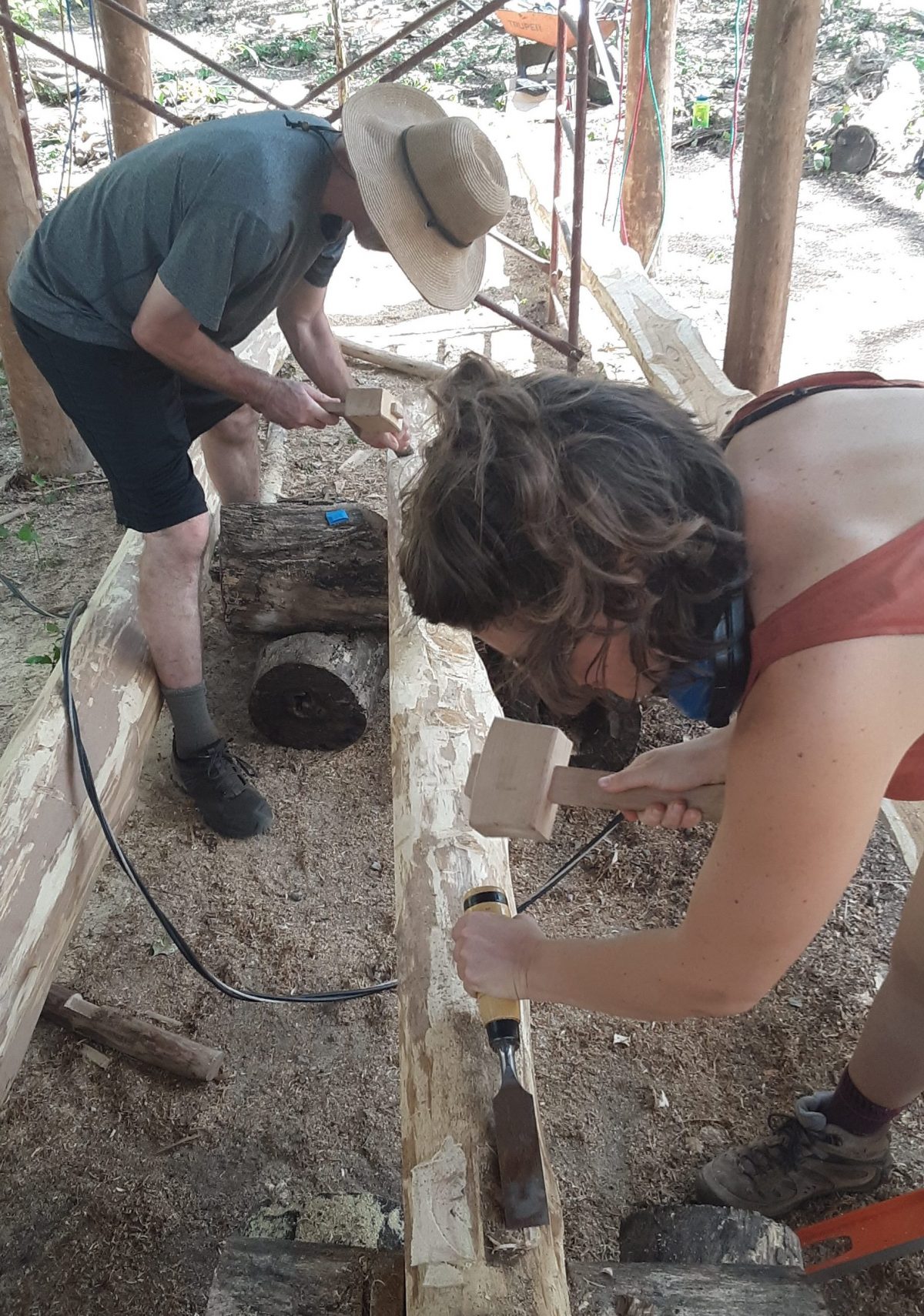
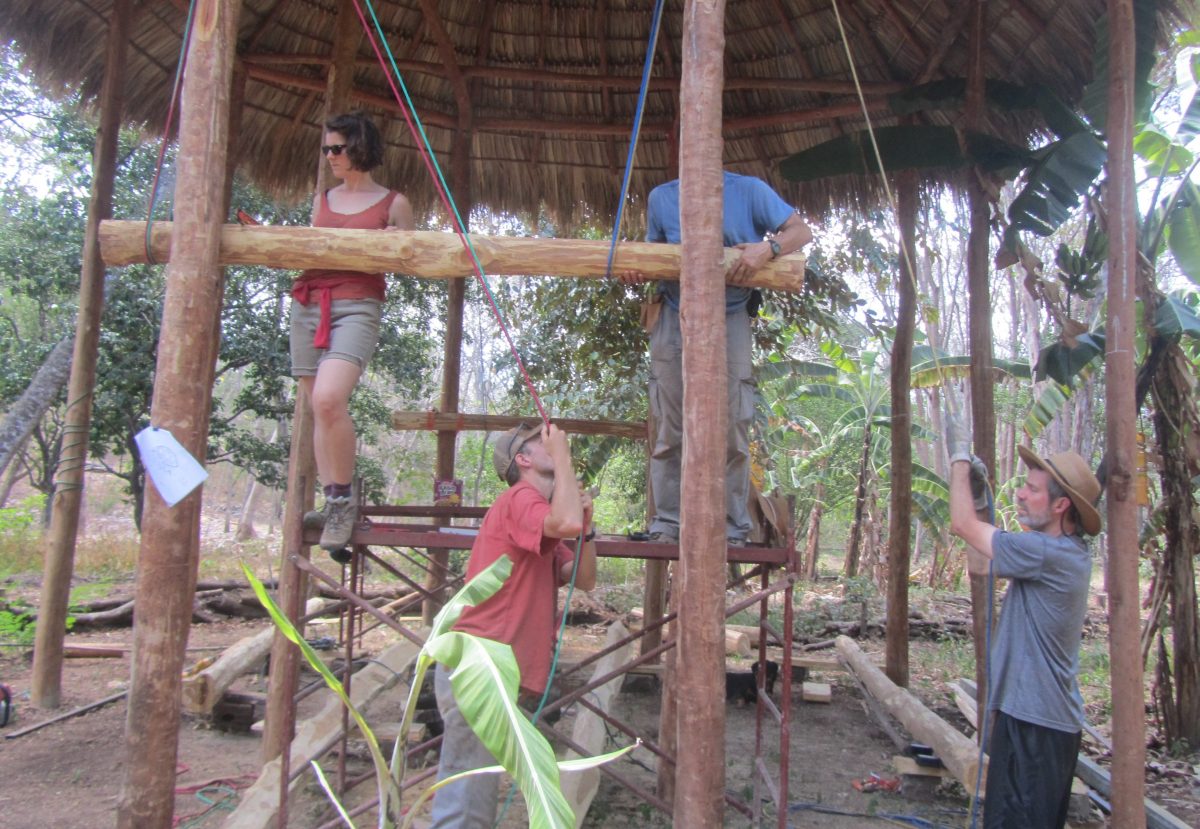
Building the Birdhouse was never intended to be a quick project — not much at ViVerde is. Instead, it will be something that we add to over the years, whenever Mark and I carve out time to spend in Nicaragua. In the end, it will be beautiful and a wonderful place to stay!
We like to joke at ViVerde that at any one time we are all working on at least three different projects. In between construction projects I found time to mosaic the shower floor in the Casita, one of our guesthouses. Now, it feels like you’re standing on a lily pad…
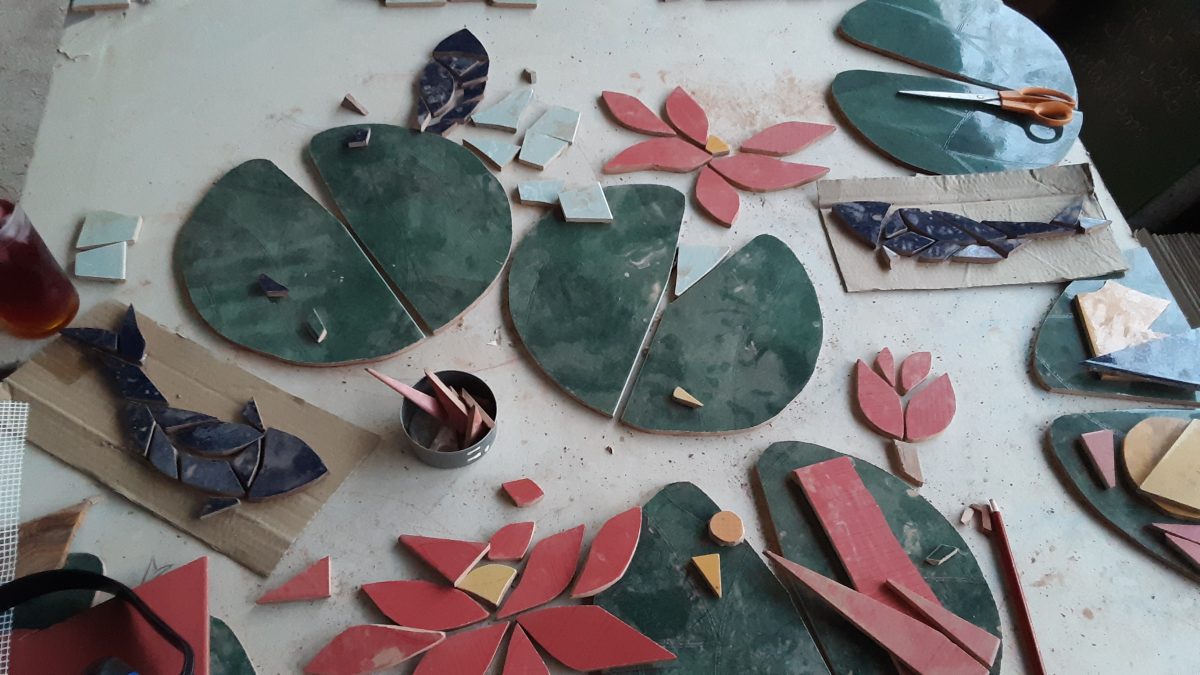
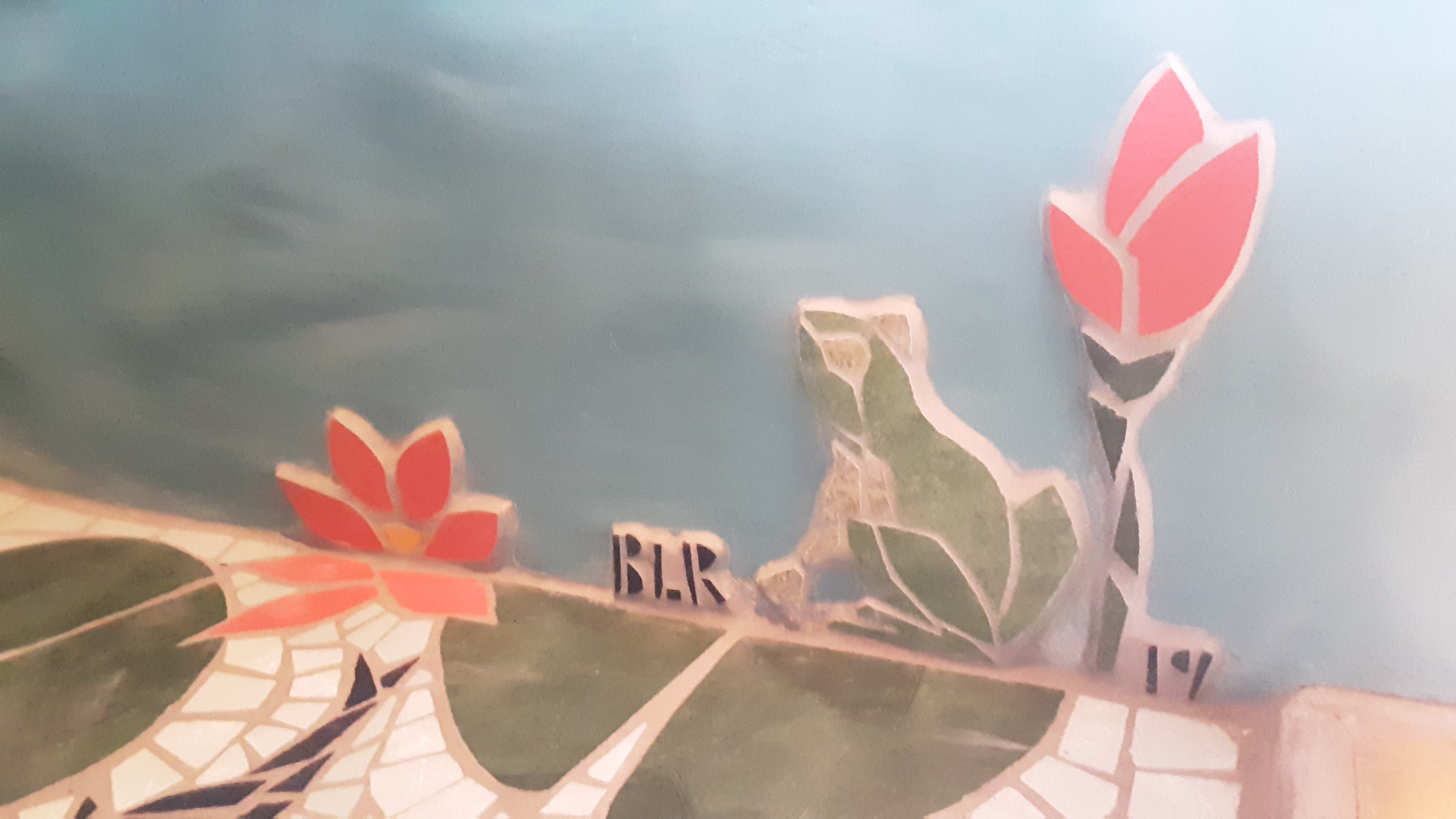
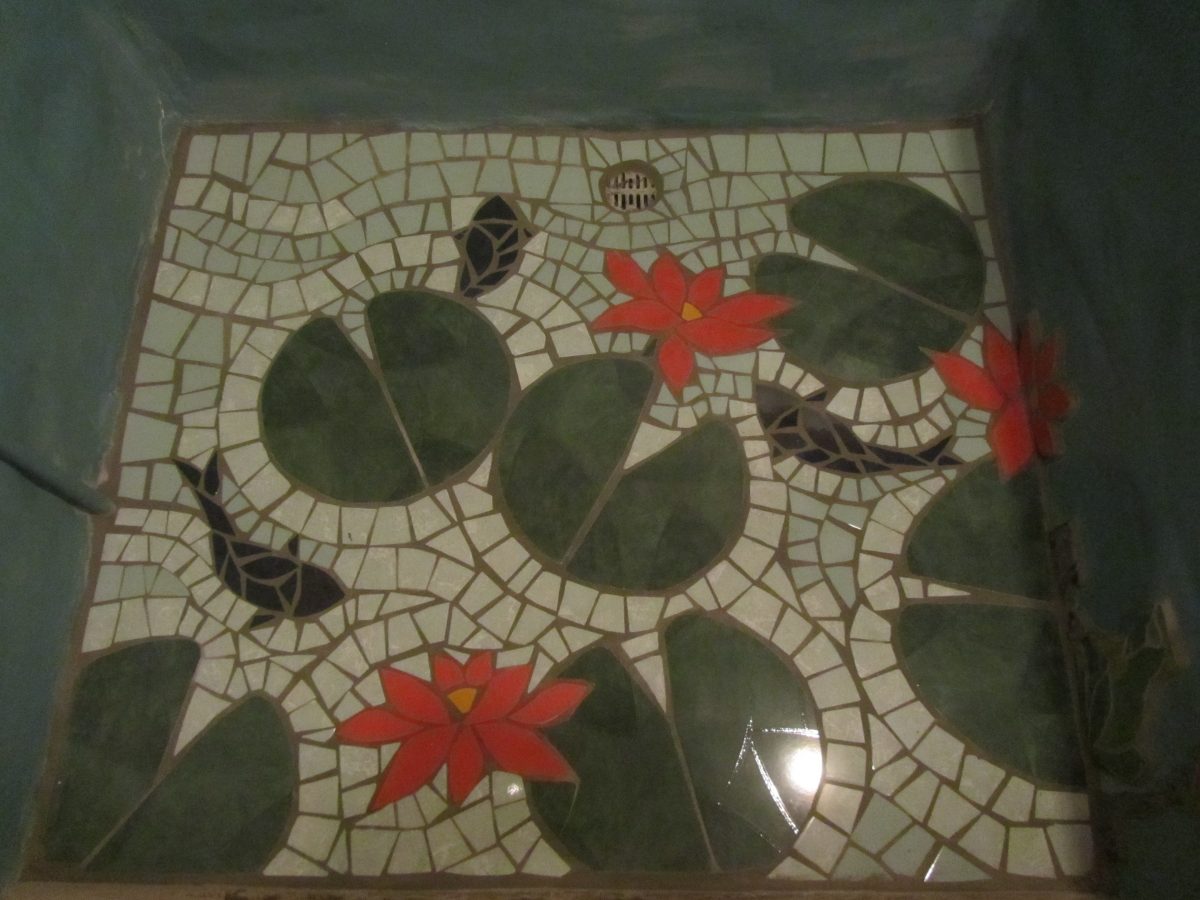
We had many guests come through ViVerde in the two months we were there. Below are two of Mark’s Hot Shot wild land firefighter buddies, Rizzo and Joe. They helped us build a much needed wooden bridge.
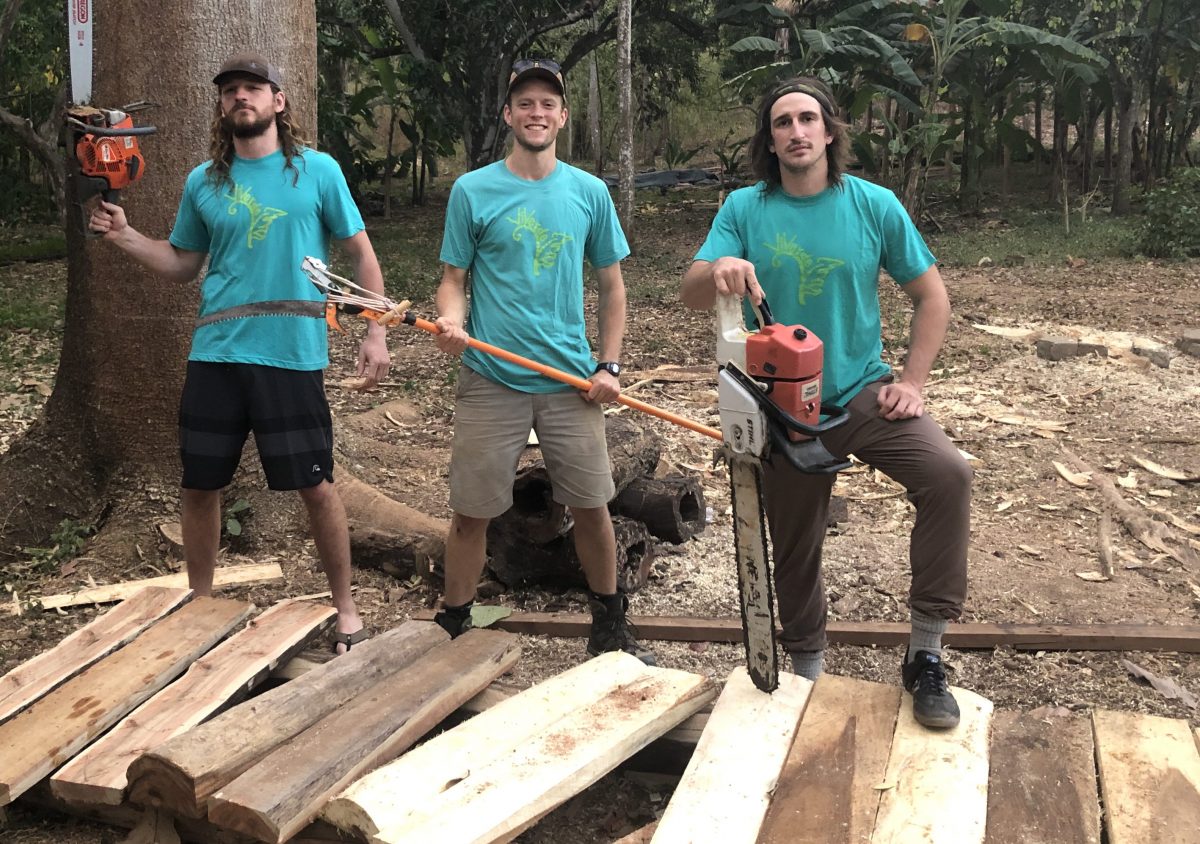
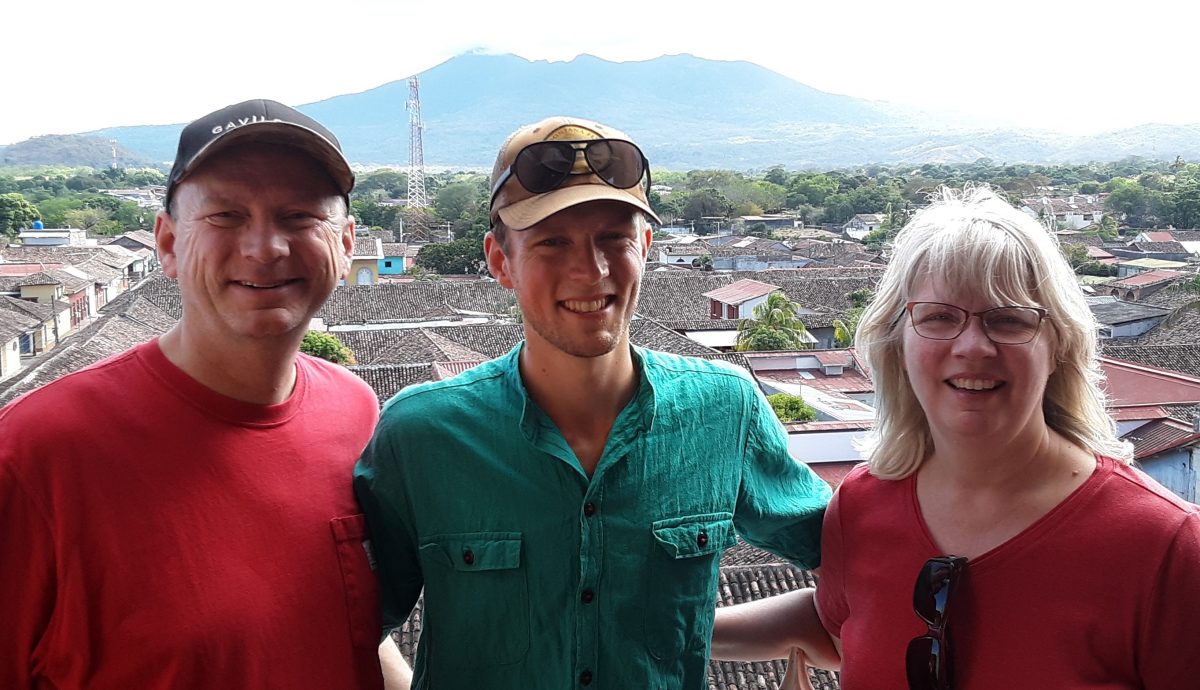
Mark in Granada with his parents, Lynne and Eric Ogren. This is Eric’s second time at ViVerde, both times he worked electrical wonders for which we are ever so grateful. Lynne is a Lutheran pastor and they currently both live in central Montana.
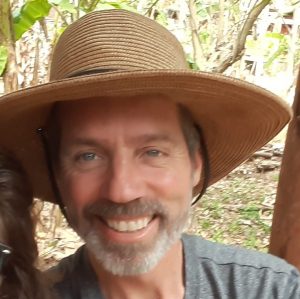
Mark’s Uncle Chris is a former Peace Corps volunteer and he enjoyed the similarities he found between Nicaragua and his former host country, Uraguay. It is always special to share ViVerde with others, accrue their talents and gifts, and expose them to the wonders of Nicaragua!
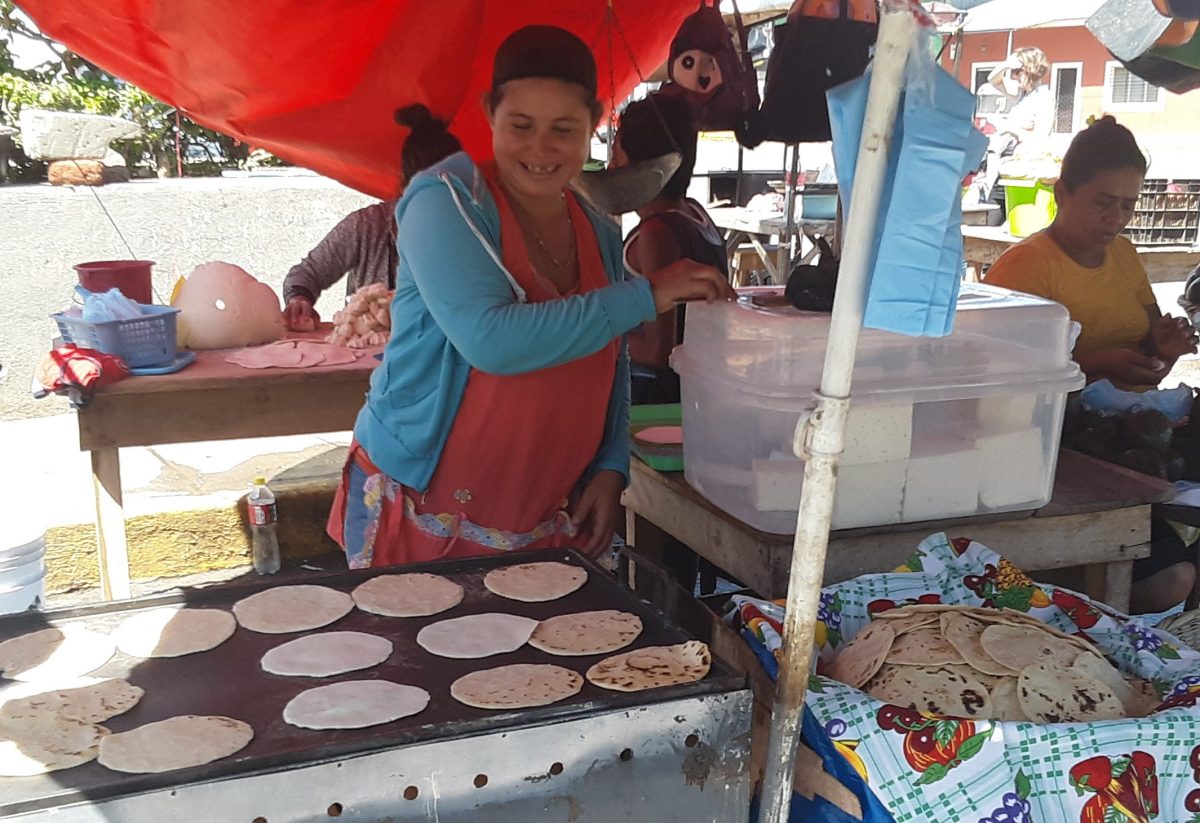
The more time I spend here, the more I love the country and the people; Nicaraguans are a resilient people, so kind hearted and colorful. Since the troubles last year, we now have tortilla stands and fruit & vegetable vendors right at the end of our road.
I just bought my ticket to spend two months at ViVerde starting early in December. Can’t wait!
NOTE: There are Nicaraguan laws governing the harvestng of lumber, even on one’s own property. Five local species are protected and require a permit to cut. In the past we obtained permits to cut a few cedars that were already dead. For this project, the trees we cut are teaks, not a protected species. These trees were planted by the previous owner and intended for use on the property.
